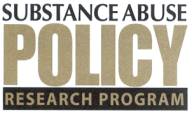 |
 |
Prabhu Ponkshe at 703-918-4930 EMBARGOED FOR RELEASE: November 14, 2002, 9:30 am Eastern State Laws on Driving under the Influence of Drugs Lack Uniformity Review of State Laws Shows Prosecutors Face Difficulty in Proving Charges Washington, DC, Nov. 14—Unlike alcohol, state laws on driving under the influence of drugs (DUID) in the U.S. vary so much that there are significant differences in how drugged driving is defined and how a charge of drugged driving can be proven or defended. A review of the DUID laws in all 50 states and the District of Columbia points out differences also exist in consent laws on which “body fluids” may be taken to measure drug levels (other than alcohol). State laws on court-ordered treatment, however, are mostly similar in cases where a prosecutor is able to obtain a conviction. The state-by-state analysis of DUID laws was conducted by The Walsh Group, in collaboration with the American Bar Association’s Standing Committee on Substance Abuse, and was funded by the Substance Abuse Policy Research Program (SAPRP) of The Robert Wood Johnson Foundation (RWJF). According to Michael Walsh, Ph.D., lead author of the analysis of state laws, driving under the influence of drugs (other than alcohol) is a growing problem worldwide and in this country, but it has not received the same attention as driving under the influence of alcohol. Walsh is a former director of the President’s Drug Advisory Council. “There is an assumption that if we can identify the drunk drivers, we are also getting all the drugged drivers. That is not true. There are literally millions of Americans who are driving under the influence of drugs, often with little or any alcohol. If DUID laws were consistent and easier to apply, we could identify these individuals and get them into treatment before they become a serious threat to public safety,” Walsh said. In most states a driver is far less likely to be prosecuted for impaired driving under the influence of an illegal substance than if the driver is under the influence of a legal substance (alcohol). This dilemma exists because all states have per se laws, which specify legal levels for blood alcohol concentration, without regard to impairment, but no practical or legal way to establish an impairment linked to per se levels for drugs. Only eight states (Arizona, Georgia, Illinois, Indiana, Iowa, Minnesota, Rhode Island, and Utah) have strict per se laws for drugs. These laws do not tolerate any presence of a prohibited substance or drug in the driver’s body while he or she is driving or in control of a motor vehicle. Most remaining states and the District of Columbia use the term, “under the influence,” but legal definitions of that term vary. Some define it as “incapacity” to drive, others define it in terms of “impairment or impaired driving,” and at least one definition relies on the words, “not having normal use of physical or mental faculties.” With these kinds of statutes, prosecutors are faced with varying levels of difficulty to prove that the incapacity or the impairment was directly related to the drug ingested. According to Walsh, because of all the other variables involved, such as the type of drug ingested, the manner in which it was ingested, and the individual’s metabolic rate, interpreting the meaning of a drug level in a biological specimen with regard to impairment is a difficult task for a scientist and even more difficult for a prosecutor. Consequently, there is limited enforcement of DUID laws, along with a lost opportunity to improve traffic safety and identify individuals who need treatment. The analysis of state laws also shows that there are differences in how a drugged driving charge can be defended. Some 21 states disallow an individual’s right to use the drug legally as a defense against a DUID charge, as is the case with prescription drugs. Other states allow such a defense, but only under special circumstances. There are also differences among states in the implied consent law, which requires an individual to provide a specimen of bodily fluids for testing. Most states require individuals to provide urine or blood for testing if requested by the police, although the penalties for refusing to provide the sample vary. Five states do not have implied consent laws, except in cases of serious injury or death; others impose a criminal penalty for refusing to submit a sample, and still others impose a penalty only if the original charge for drugged driving can be proved in court. A majority of the states do provide for court-ordered substance abuse treatment and/or education, some allow courts to “sentence” offenders to inpatient or outpatient treatment facilities, and some states require participation in a treatment program as a condition of probation or as a prerequisite to reinstatement of driving privileges. SAPRP is a $54-million program that funds research into policies related to alcohol, tobacco, and illegal drugs. The state-by-state review of DUID laws is available at www.saprp.org. The Robert Wood Johnson Foundation (www.rwjf.org), based in Princeton, New Jersey, is the nation’s largest philanthropy devoted exclusively to health and health care. It concentrates its grant making in four goal areas: to assure that all Americans have access to basic health care at reasonable cost; to improve care and support for people with chronic health conditions; to promote healthy communities and lifestyles; and to reduce the personal, social, and economic harm caused by substance abuse—tobacco, alcohol, and illicit drugs. |
